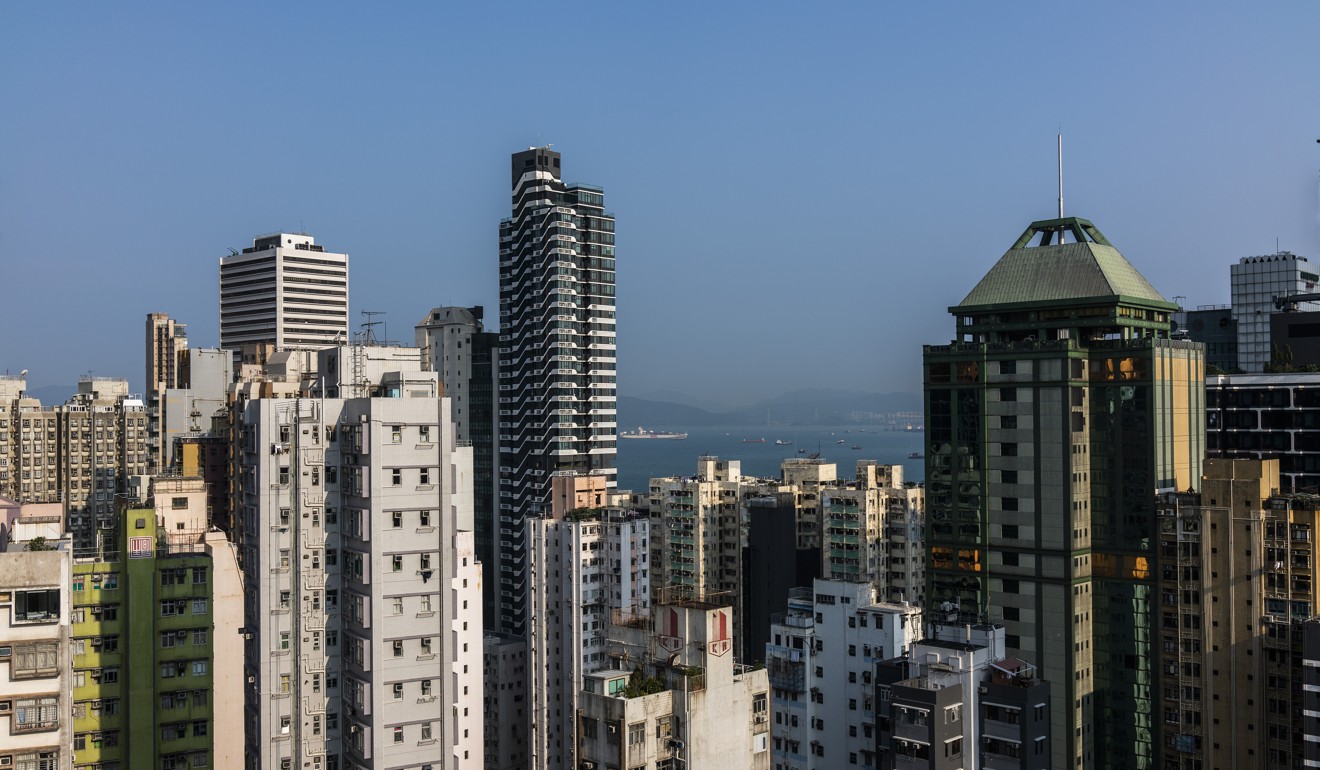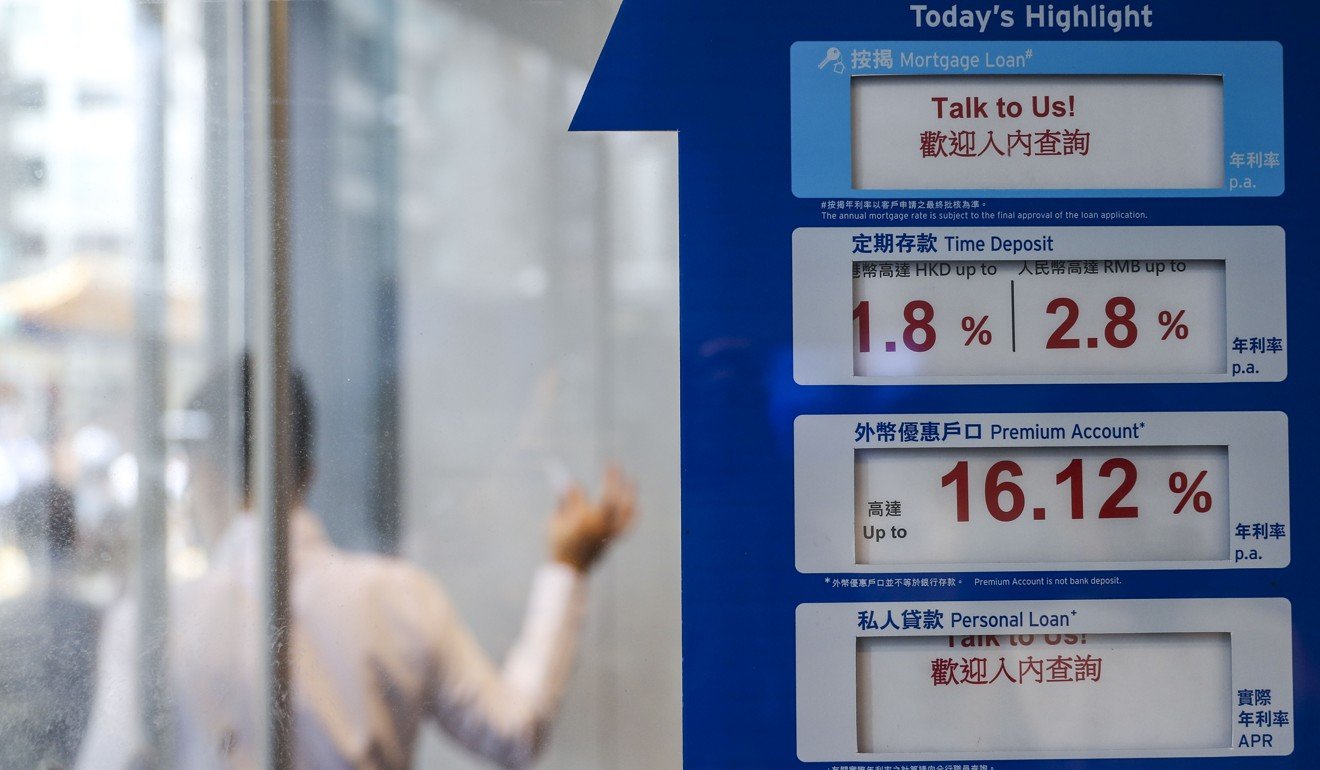
Hong Kong’s currency peg to the US dollar isn’t an Achilles’ heel – it’s an Achilles’ shield
- The peg, which prevented a complete economic wipeout in 1983, has been described as a ‘deadly weakness’
- But in truth it is an automatically self-correcting mechanism that today’s Hongkongers can be thankful for, writes Tom Holland
In an article in the South China Morning Post last week, Zhou argued that the peg left Hong Kong’s economy extremely exposed to falls in local stock and property prices.
“If asset prices are plunging, it would trigger an exodus of funds at the same time, translating into a double hit for the Hong Kong economy,” Zhou warned.
Now, the Chongyang Finance Research Institute sounds at first like a reputable academic institution. However, a quick look at its website might cause you to question that assumption.
The real danger behind US currency manipulation charges against China
Last week, for example, one of Zhou’s senior colleagues dismissed Hong Kong’s protesters as “confused”. Saying he has visited Hong Kong “several times”, he declared that “the idea that this is all about democracy is nonsense”.
“Most people are more interested in the back sports pages of newspapers than they are in the front political parts,” he claimed, adding that local discontent was motivated by Hongkongers’ material greed.
However, just because one of his colleagues spouts such idiocies is no reason to dismiss Zhou’s warning out of hand. So let’s unpack his argument that Hong Kong’s currency peg to the US dollar is a fatal flaw to see if it stands up to examination.
Zhou is correct to say that the HKMA cannot support local asset markets with unlimited quantities of liquidity.

This is by design. The architects of the peg were perfectly aware that it would be impossible for Hong Kong to allow the free movement of capital while at the same time operating both a fixed exchange rate and an independent monetary policy.
For Hong Kong as an international banking centre, free capital flows were essential. Indeed, free movement of capital is why the city is today a major international financial centre, while Shanghai is not.
So, the choice was between a fixed exchange rate and an independent monetary policy.
Well, Hong Kong operated an independent monetary policy before 1983, and as a result it had to allow the Hong Kong dollar to float. It was an unhappy combination. When the Sino-British negotiations leading up to the handover looked as if they were running into trouble, confidence in the city’s future collapsed, and so did the currency’s exchange rate.
Why the extradition bill protests won’t burst Hong Kong’s property bubble
Between January and September 1983, the Hong Kong dollar lost a quarter of its value against the US dollar. It was only the October decision to reverse course, sacrifice monetary independence and fix the exchange rate that restored confidence and prevented a complete economic wipeout. It was a decision today’s Hongkongers can be thankful for. If the city still operated a floating exchange rate, it is likely that increasing fears of intervention by mainland security forces over recent weeks would have triggered a fresh slide in the Hong Kong dollar, inviting a maelstrom of speculation that would have led in turn to a full-blown currency crisis.
As it is, the city’s financial markets and economy have remained remarkably stable. The exchange rate remains fixed. The stock market is in positive territory year-to-date. Property prices are within 1.2 per cent of their all-time high. And the local jobless rate is at just 2.9 per cent – effectively full employment.

But what about Zhou’s warning that a steep sell-off in Hong Kong’s asset markets could lead to destabilising capital flight, and that because of the peg the local authorities would be powerless to prevent the outflows inflicting catastrophic damage on the city’s financial system and economy?
It is true that large-scale capital flight could push local interest rates to frightening levels. During the Asian crisis in 1997 and 1998, the one-month Hibor rate, to which most mortgages are now linked, twice rose to 20 per cent. But on each occasion, the spike lasted only a few days – not long enough to inflict serious pain on borrowers – and local interest rates soon subsided back into line with US rates.
That’s the point. The mechanism is automatically self-correcting. If capital flows out of Hong Kong, Hong Kong-dollar liquidity dries up, and local interest rates rise until they reach a level that attracts capital back again.
China’s sinister plan to buy Eastern Europe is exaggerated
Right now, that level wouldn’t have to be very high at all. With US$16 trillion of global bonds currently offering negative yields, the 10-year US Treasury bond paying just 1.6 per cent, and investors around the world desperate for yield, it is highly likely that even in a major asset market sell-off, local interest rates would have to rise to no more than 4 per cent or 5 per cent to attract net inflows of funds once again. The HKMA’s stress tests indicate that the local financial system would take such an increase in its stride, with minimal knock-on effects.
Of course, if the People’s Liberation Army were to roll into Hong Kong guns blazing, all bets would be off. Confidence in the city would crash, and so would the local financial system in the unlikely event it remained open.
But that would be the least of anyone’s problems. A Tiananmen-style suppression of the city’s protests would force the world’s other major economies to cast China out of the global trading system. China’s economy would crash, and the rest of the world would enter a deep depression as globalisation unravelled.
That’s the doomsday scenario, and Beijing’s instinct for self-preservation will ensure it doesn’t happen. Barring that, Zhou is wrong: Hong Kong’s currency peg to the US dollar is not a weakness, it’s a strength. ■

